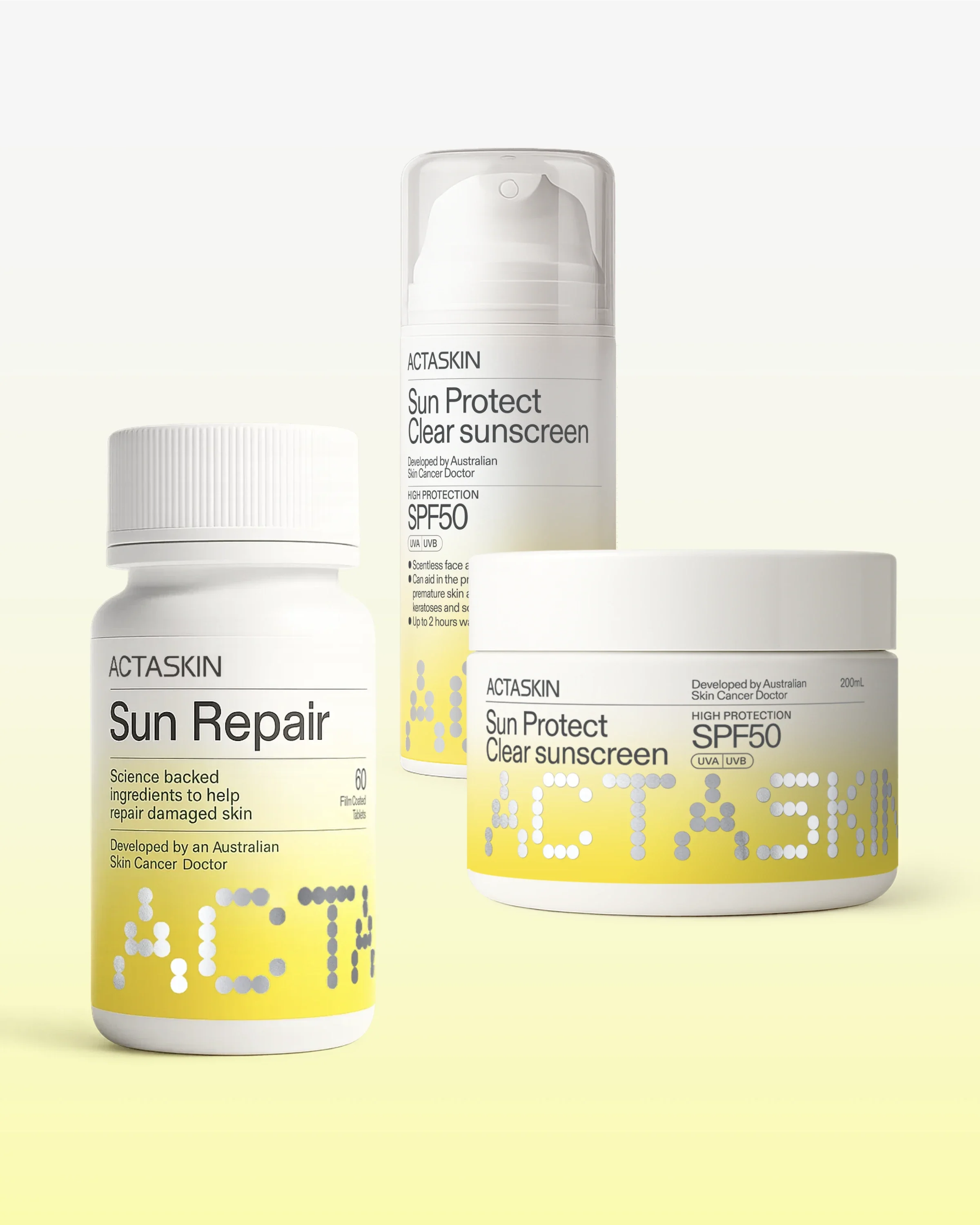By Dr Austin Lang | Master of Medicine (Skin Cancer), Bachelor of Surgery, Bachelor of Medicine, Bachelor of Science, FRACGP
Chief Medical Officer, Actaskin
Cancer starts when something goes wrong in how our cells grow and divide. Normally, the body makes new cells in a controlled way: cells grow, replace old ones, and repair damage. But sometimes, that process breaks down. Cells become abnormal, multiply when they shouldn't, and don’t die when they should. That’s cancer.
In the case of skin cancer, these faulty cells form a tumour which is a lump or growth in the skin.

image by Cancer Council (2023)
Australia has one of the highest rates of skin cancer in the world. Around two in three Australians will be diagnosed with skin cancer before the age of 70. Most of these won’t be melanoma, instead they are Basal Cell Carcinoma (BCCs) or Squamous Cell Carcinoma (SCCs), collectively called non-melanoma skin cancers (NMSC) or keratinocyte cancers.
Prevalence of BCC and SCC
Basal Cell Carcinomas (BCCs) are the most common, making up around 66% of all skin cancers. They’re slow-growing but persistent. Left untreated, they can burrow into surrounding tissue and disfigure the skin, especially in high-exposure areas like the nose, ears, and temples. Squamous Cell Carcinomas (SCCs) are faster growing and more serious. They account for about 33% of skin cancers and can spread to other parts of the body if not caught early. Some of them can be life-threatening.
Combined, BCC and SCC make up 99% of all diagnosed skin cancers in Australia.

image by Cancer Council (2023)
But here’s what’s even more sobering: skin cancer kills more Australians every year than road accidents and the risk is higher in men than in women. Men have a 73% of developing at least one NMSC whereas women have a 65% chance of developing at least one NMSC. The risk of mortality is also higher in men - 66% of skin cancer deaths occur in men.
Although NMSC are the most common cancers in Australia, they’re often underreported because cancer registries don’t routinely record them. Many NMSCs are self-detected and treated in GP clinics, sometimes without biopsy or lab confirmation—making them invisible in national cancer statistics.
UV Exposure: The Root Cause of an Unseen Crisis
Over 95% of skin cancers are caused by UV radiation, which damages skin cells—even when it’s cloudy or cool. You can’t see or feel UV, and its effects build up over time, causing invisible damage long before sunburn or a tan appears. This damage is cumulative.
While protecting your skin daily is critical, addressing the consequences of past sun damage matters just as much.
By Dr Austin Lang | Master of Medicine (Skin Cancer), Bachelor of Surgery, Bachelor of Medicine, Bachelor of Science, FRACGP. Chief Medical Officer, Actaskin
Dr Austin Lang is a skin cancer doctor renowned for his expertise in diagnosis and management, with a strong focus on prevention and patient-centered care. He leads Actaskin’s clinical strategy and product development.
This article is for informational purposes only and does not constitute medical advice. Always consult your doctor, dermatologist, or other qualified health professional regarding any concerns about your skin or before starting any new supplement. While the active ingredient in Sun Repair has been clinically studied, individual results may vary. Sun Repair is not intended to diagnose, treat, cure, or prevent any disease. Always use in conjunction with appropriate sun protection measures.



